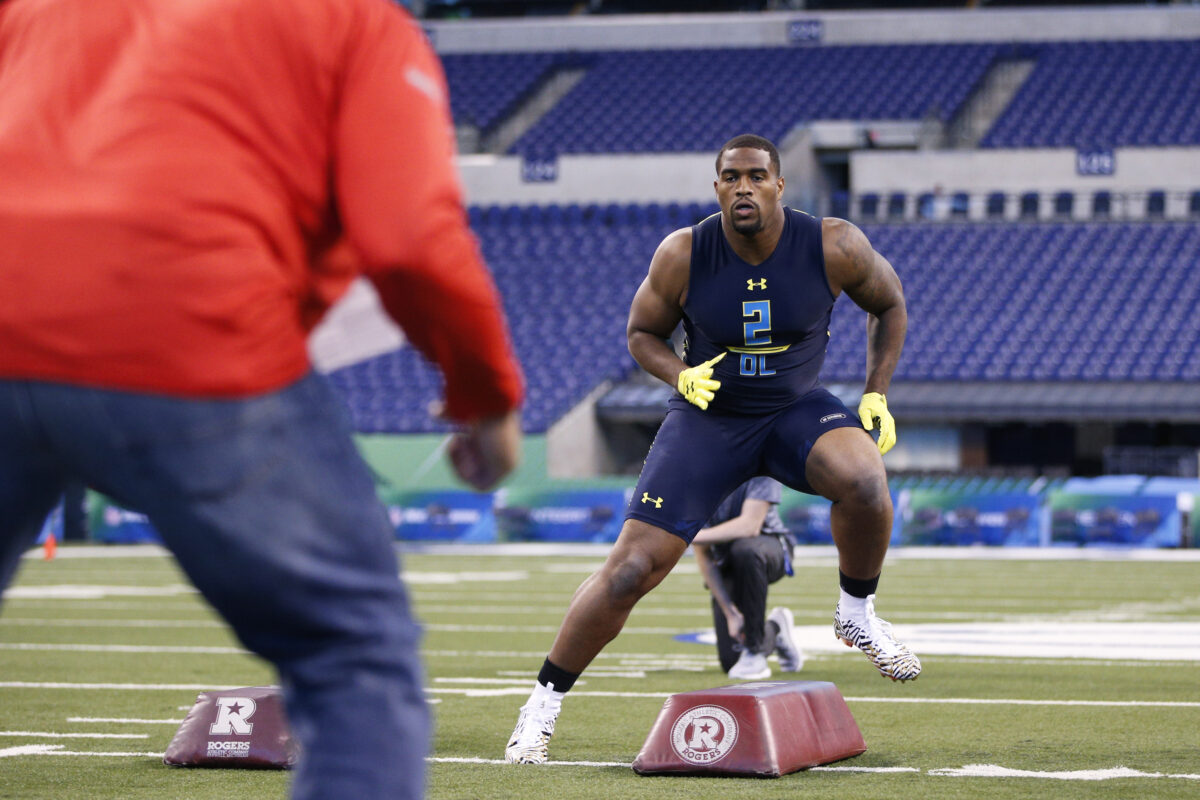The New Orleans Saints don’t have a more pressing team need than defensive tackle, so it’s good to see the 2023 NFL draft on the horizon. This year’s rookie class should bring them plenty of options at getting better along the defensive line, especially the interior; but the Saints are notoriously strict in their athletic prototypes, so it’s worth looking into the list of prospects and finding who meets their standards and who comes up short of the mark.
To find out what the Saints value, we looked into the scouting report of every defensive tackle to play for them since the 2018 season, which gave us averages and minimums for a variety of measurements and athletic testing results. Here are the minimums the Saints have used in each category at defensive tackle since at least 2018, with averages in parentheses:
- Height: 6-foot-1 (6-foot-2)
- Weight: 280 pounds (301 pounds)
- Arm length: 32 inches (32.9 inches)
- 40-yard dash: 5.1 seconds (5.02 seconds)
- 10-yard split: 1.8 seconds (1.74 seconds)
- 3-cone drill: 7.8 seconds (7.52 seconds)
- Short shuttle: 5 seconds (4.62 seconds)
- Vertical jump: 28 inches (30.1 inches)
- Broad jump: 8-foot-5 (9-foot-1)
They aren’t nearly as demanding with the athleticism of interior linemen as edge players, but the Saints do still have standards they try and maintain. Both of their lightest defensive tackles since 2018, Margus Hunt and Kentavius Street, entered the NFL at around 280 pounds but played for New Orleans at 287 or higher. As Dennis Allen is fond of saying, they believe it’s a big man’s game in the trenches.
With that in mind, here are some draft prospects who fall short of the minimums in two or more categories (including athletic testing results, which you can find here). In many cases it isn’t the height or weight or length that’s an issue, but the movement skills:
- Jerrod Clark, Coastal Carolina
- Keondre Coburn, Texas
- DJ Dale, Alabama
- Siaki Ika, Baylor
- Tyler Lacy, Oklahoma State
- Calijah Kancey, Pittsburgh
- PJ Mustipher, Penn State
- Jaquelin Roy, LSU
Notably, the list of players who hit every benchmark (at least in the drills they completed) includes Mazi Smith (Michigan), Byron Young (Alabama), Keeanu Benton (Wisconsin), Moro Ojomo (Texas), Zacch Pickens (South Carolina), Adetomiwa Adebawore (Northwestern), and Bryan Bresee (Clemson). And of that smaller pool, only Bresee, Pickens, and Adebawore came close to meeting the positional averages, but they’re each under 300 pounds. Benton came close but his 40 time was off by 0.06 seconds.
So don’t expect the Saints to split hairs to such an obsessive degree. They aren’t going to pass on good players because of a hundredth of a second or a couple eighths of an inch. The full evaluation weighs those shortcomings against other traits and positive marks on the scouting report. Some prospects may have too many areas of concern to ignore, but many of them will be considered anyway. The Saints are too thin at defensive tackle right now to be too picky.
[lawrence-auto-related count=3]
[stnvideo key=”CePrggxWMq-2664481-7618″ type=”float”]

